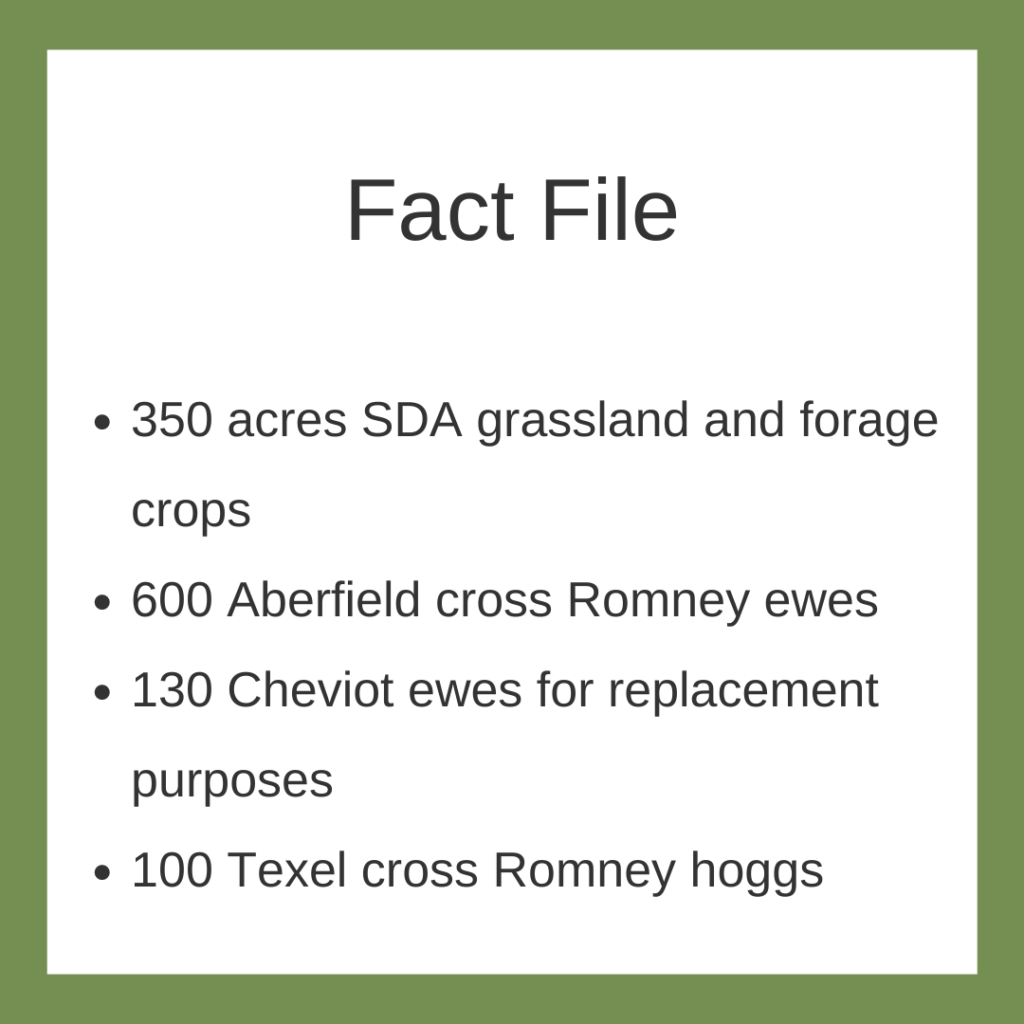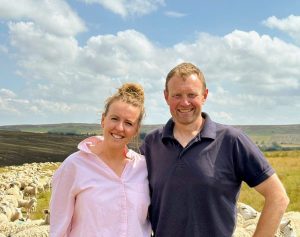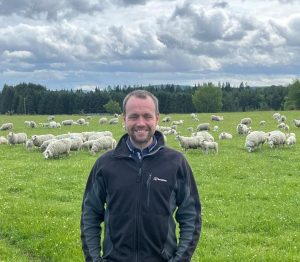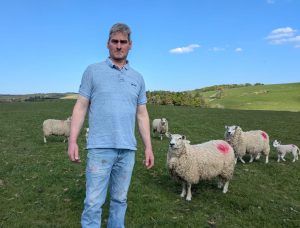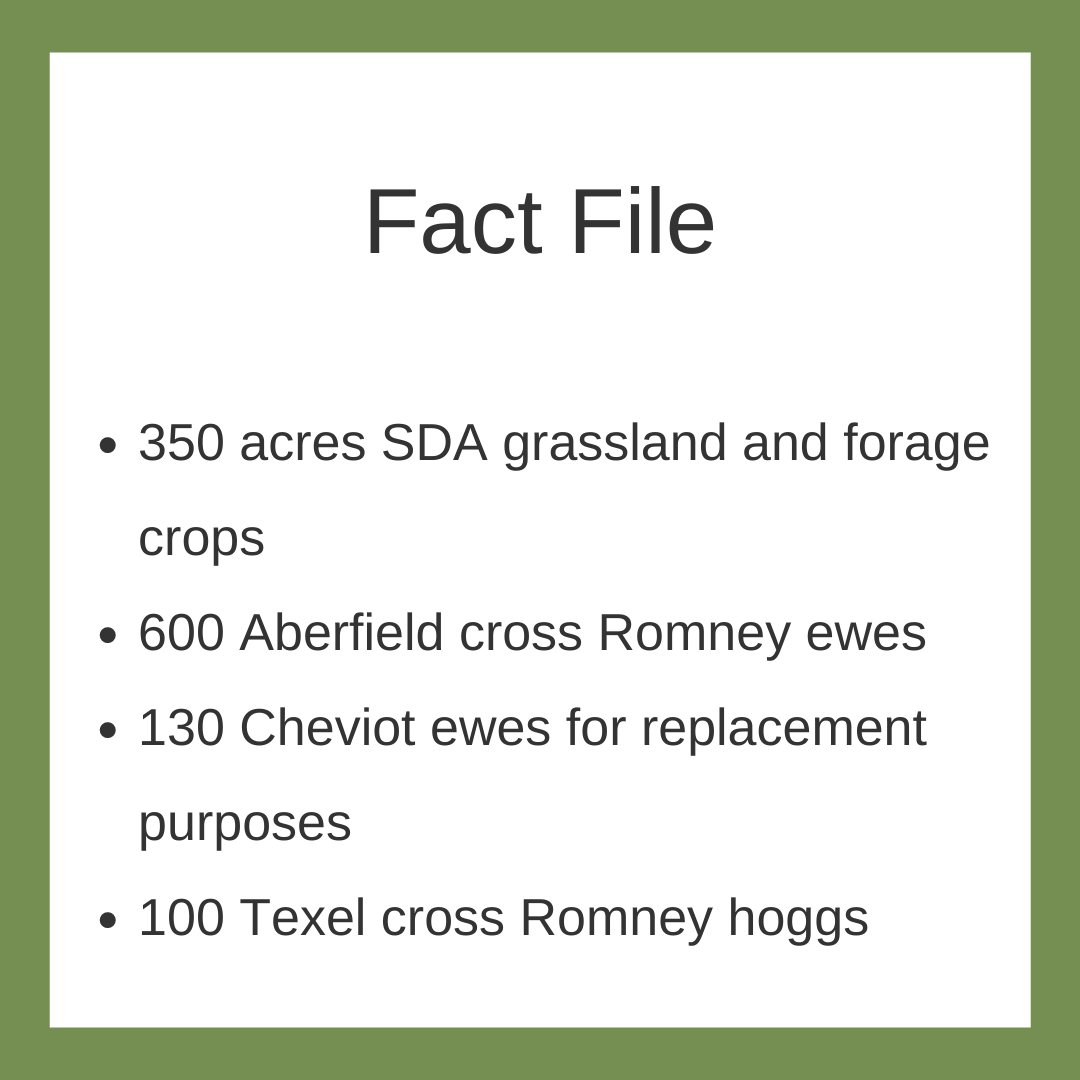
Jim Beary is future proofing his low input, hill and upland sheep enterprise. “Breeding, rearing and maximising kilos of fast finishing lamb solely from forage will be essential to maintain a sustainable sheep farming business in future, despite the fact SDA units like this could continue to receive some sort of payment. It’s a strategy we consider a potential blueprint,” he explains.
“Fast finishing from forage cuts costs and reduces total inputs – the number of drenches and subsequent number of gathers to two, and in turn frees up the remaining grass for other purposes.”
The main flock features Aberfield Romney ewes put to the Focus Prime along with the Texel Romney hoggs; last season lambs reached 16kg target weight from 12 weeks, whilst 90% the crop was finished at an average 18kg off forage on the unit which lies between 800’ and 1,200’ – 50% finished off grazed unimproved pasture and the remainder off forage rape under sown with Italian ryegrass. The Aberfield Romenys averaged 161% lambs reared.
Jim has yet to complete his first 12 months farming Ughill. Securing the 10-year tenancy in 2017 enabled him to double the size of sheep enterprise he managed on a Staffordshire County Council tenanted unit which had enabled him to put his first rung on the farming ladder and establish a 400 ewe Aberfield cross flock. “There, I was farming a lowland unit, and the entire lamb crop finished off grazed grass at 19kg target weight within 16 weeks.
“At Ughill we will have to sacrifice target finishing weight to 16kg. We are targeting 350g daily liveweight gain (DLG) pre-12 week weaning; 150g to 200g DLG off unimproved pasture and 300g to 400g DLG off forage rape. Consequently, it’s going to be even more important we have fast growing lambs and better growing forage. It’s also vital to keep enough grass in front of the ewes so they will perform – milk well, stay in appropriate condition and conceive again.”
Jim has every confidence in the unit’s genetics. “Back in 2013, I’d heard of Innovis genetics, did some research and initially invested in 90 Aberfield cross lambs,” he explains. “Not only did I like the performance, in particular high growth rates as well as ease of management, especially lambing, but the fact Innovis sheep are backed by science. Every single ewe is performance recorded and accompanied by a set of EBVs. They have gone on to consistently ‘do what it says on the tin’ and enable me to run a high output low input system, and I am convinced they will continue to perform in the low input system at Ughill.”
Meanwhile, Jim signed up to a Tesco cost of production (COP) lamb contract which he says takes the volatility out of the market place by offering a forward lamb market price based on the member group’s average COP. “I also joined the Focus Prime scheme because I wanted to produce lambs that were faster growing resulting in fewer days on farm. I’m leasing seven Focus Prime rams bred by Innovis and they demonstrate real power. I introduced them in a 1:100 ratio, ewes scanned 180%, shearlings 160% and hoggs 101%.
“The scheme has introduced additional new benefits. Leasing the Focus Prime rams helps to spread the costs and I believe that being part of the supply chain is reaping rewards in supplying feedback back down the chain and in turn helping me to tweak supply.”
When it comes to improving the hill and upland unit’s forage, Jim explains: “The pasture is currently growing 5tDM/ha to 6tDM/ha, however we believe there is potential to double that volume by sub-dividing the paddocks, introducing rotational grazing and taking the covers down from 2,000kg DM/ha to 1,500kg DM/ha – late June we’ll by running up to 300 ewes and their lambs in one paddock, whilst the lambs will be finished strip grazing 25 acres of forage rape and Italian ryegrass. In the short to medium term, we plan to implement a reseeding programme – we believe there is potential to improve around two thirds of the farm.”
He adds: “Going forward, for a hill unit like this to succeed in farming, then I think we all have to become increasing efficient, and for the sheep sector, the tools are emerging to do the job well and to mitigate against marketplace uncertainty. Innovis has taken a lead in sheep genetics, whilst grass varieties are being selected for productivity, grassland management is becoming more precise and we have an increasing number of tried and tested alternative forage crops to choose from.”
